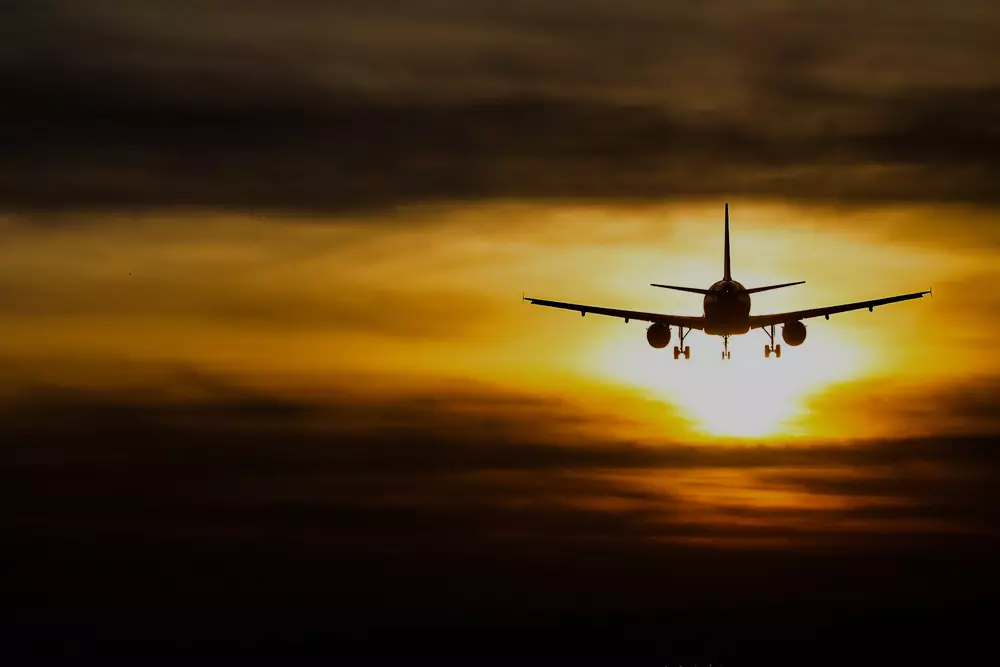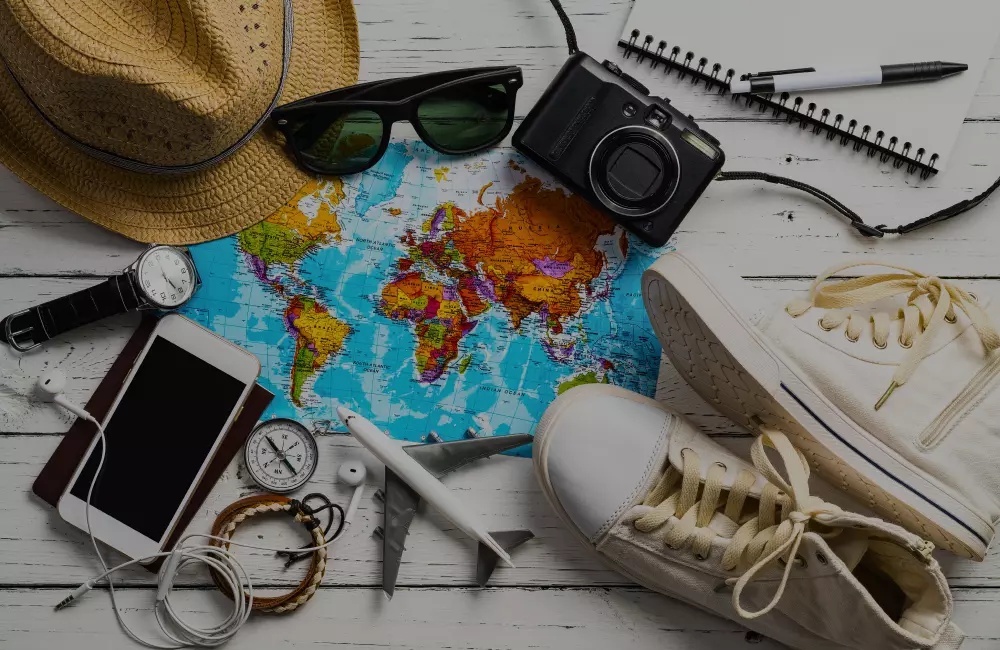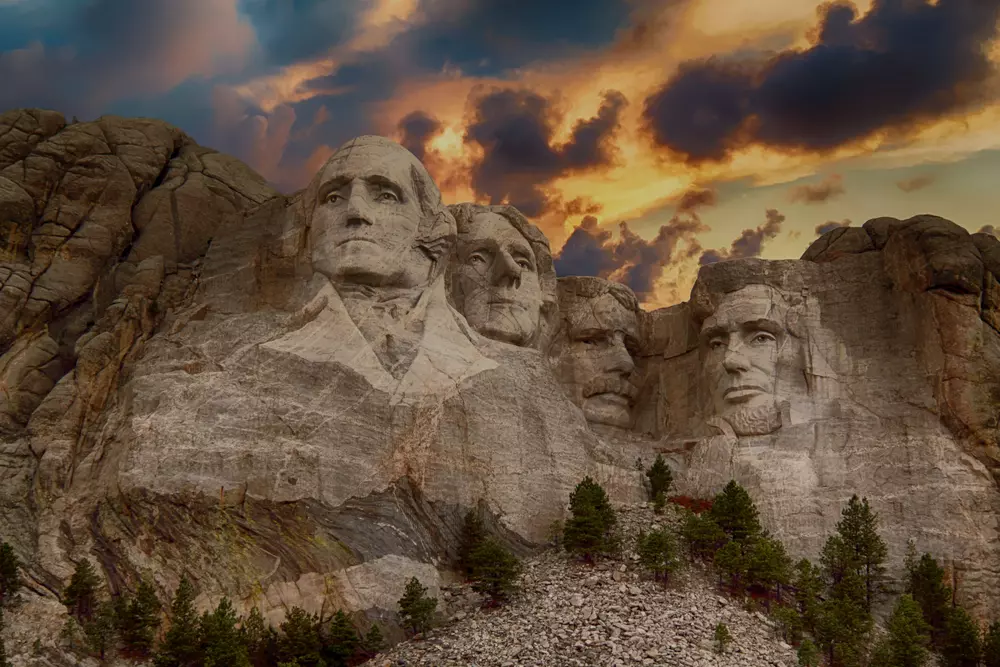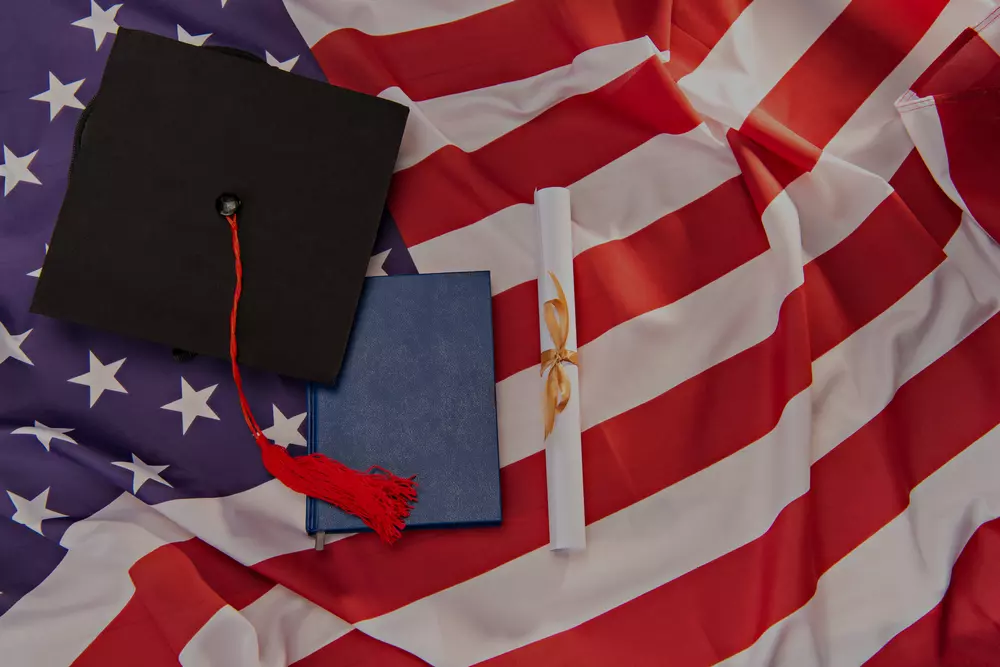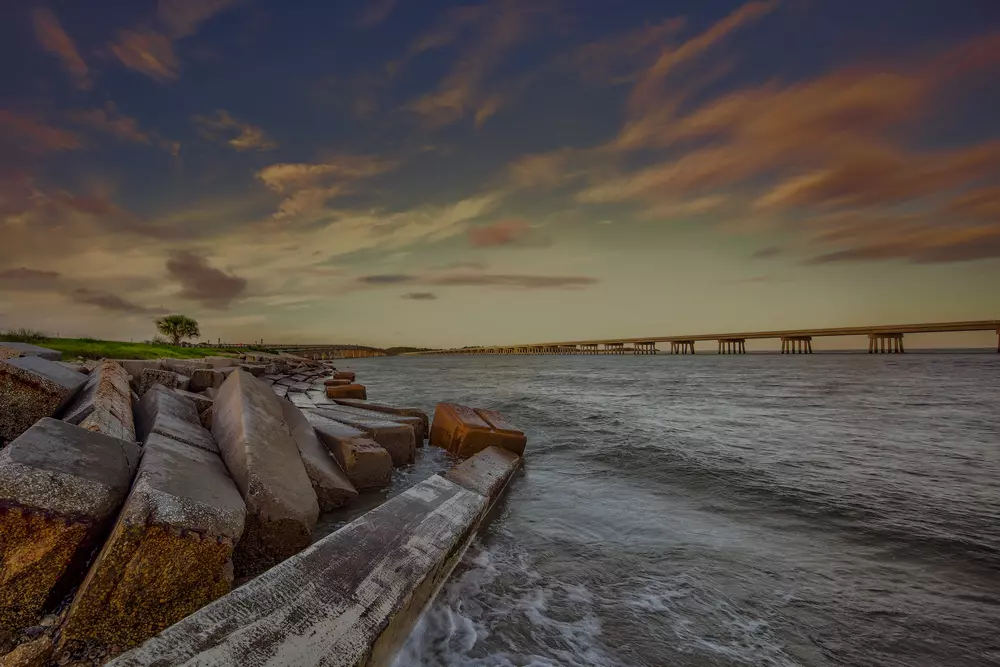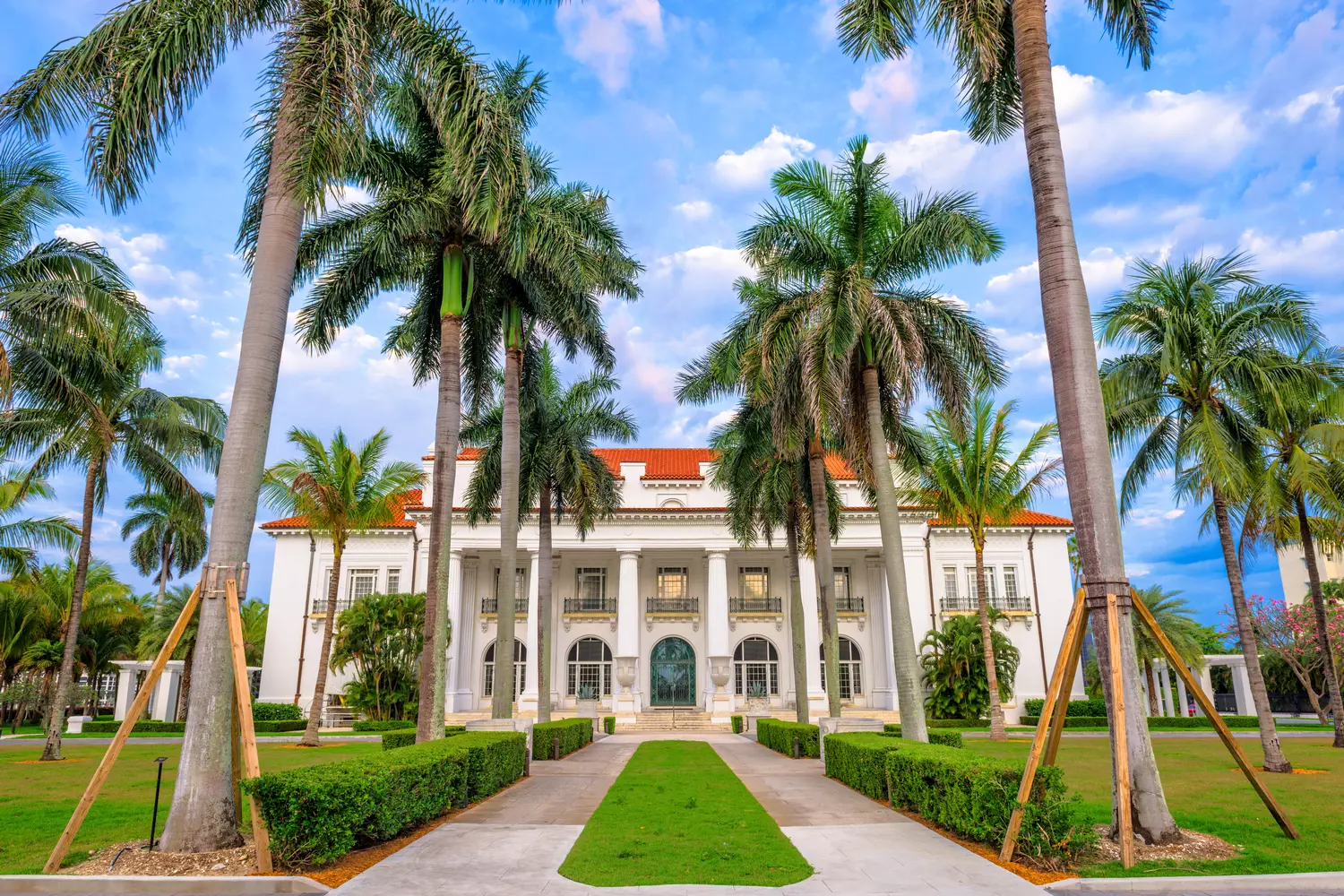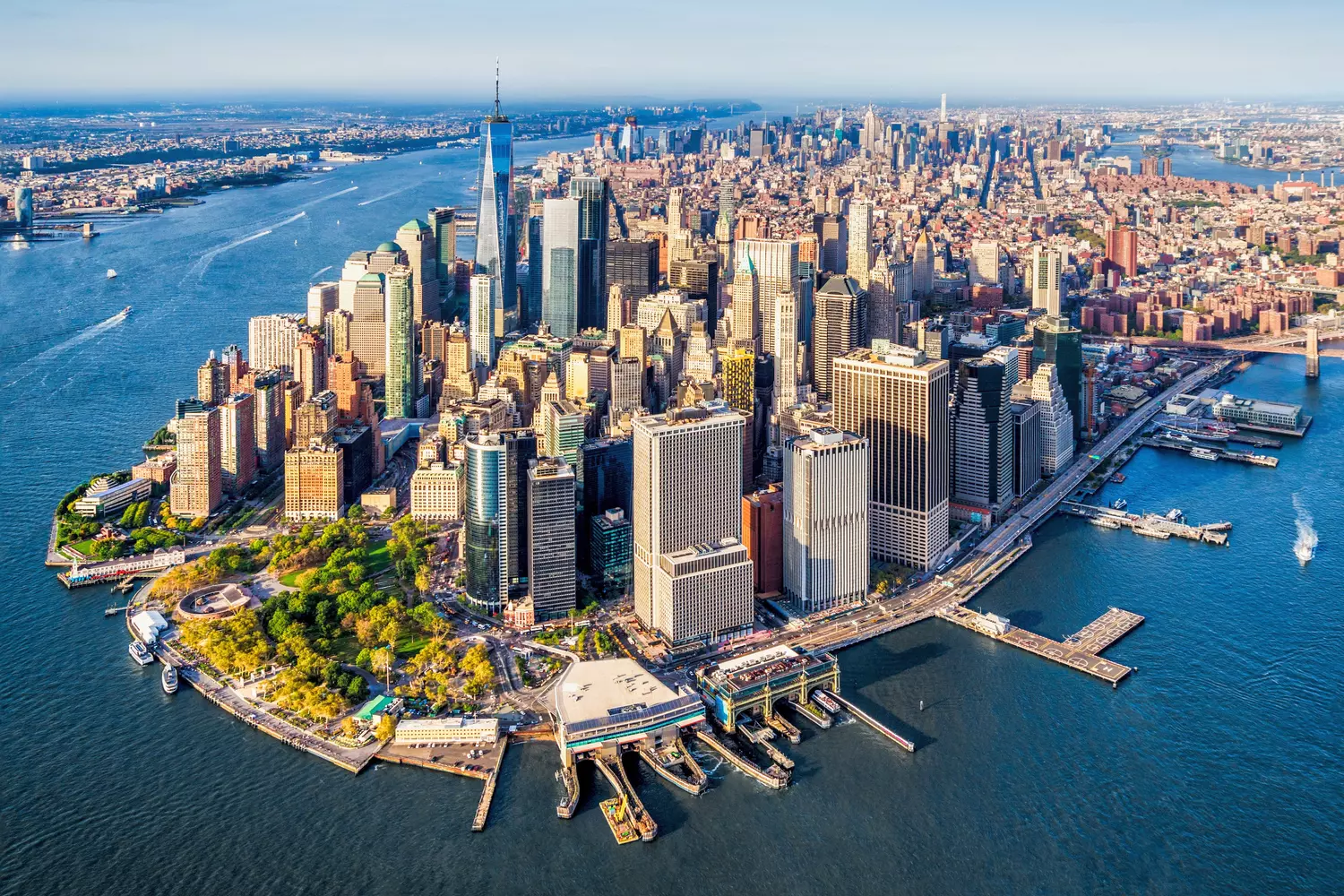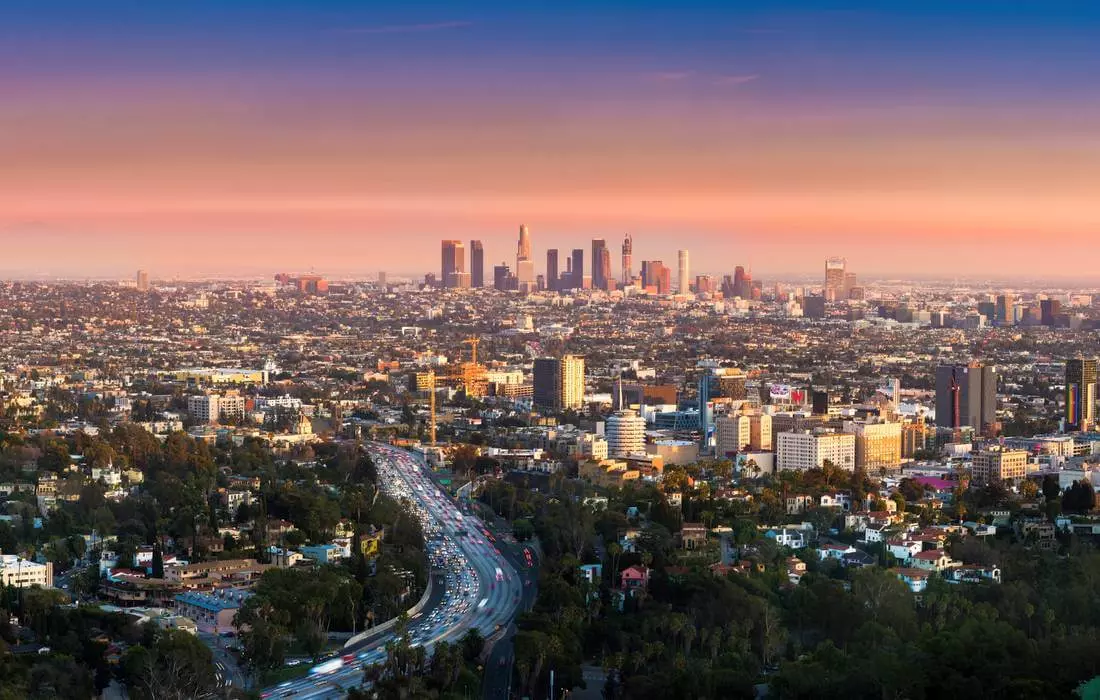When traveling across the United States, it's impossible not to notice the scale and convenience of local airports. They are not just points of departure and arrival, but true transportation hubs that connect continents and millions of people. Business routes intersect here, long-awaited vacations begin, and life-changing meetings take place.
In this article, we’ll explore the most famous airports in the US, which handle thousands of flights every day. Fasten your seatbelt — let’s take a journey through the world of the largest airports in the United States!
Atlanta Airport (Hartsfield-Jackson) sells more Chick-fil-A chicken sandwiches than any other location in the USA!
Hartsfield-Jackson International Airport
Atlanta, Georgia
Airport code: ATL
ATL consistently holds the title of the busiest airport in the world, serving over 100 million passengers annually. Its history dates back to 1926 when a small airfield was established on the site of the former Candler Field racetrack. Over the decades, the airport rapidly grew to become the largest hub for both domestic and international flights. Today, ATL connects over 150 destinations worldwide and serves as a major transit hub for Delta Air Lines.
Architecturally, ATL is a modern complex with five parallel runways, two massive terminals, and an extensive network of shops, restaurants, and lounges. The airport is so busy that, on average, a plane takes off or lands every 30 seconds!
Architecture and Infrastructure
- Five parallel runways.
- Two massive terminals: one for domestic and one for international flights.
- A wide array of shops, restaurants, and lounges.
- Spacious waiting areas with comfortable rest zones.
- Free Wi-Fi and workspaces for business travelers.
- Children’s play areas and entertainment zones.
The airport is divided into two main terminals and seven connected concourses (A-G), with an underground train, the Plane Train, shuttling between them.
- Domestic Terminal
Handles flights within the US. - International Terminal Maynard H. Jackson (Concourse F)
For international flights.
Popular Destinations: New York, Los Angeles, London, Paris, Tokyo, Dubai, Amsterdam, Mexico City.
Things to Do While Waiting for Your Flight
- Sky Train Art Walk
A contemporary art exhibition with installations along the Sky Train route. - Atlanta Gateway Sculpture
A massive art sculpture at the entrance to the international terminal. - Paschal’s
A legendary restaurant serving fried chicken and traditional American cuisine. - Dufry Duty-Free (Concourse E, F)
A wide selection of perfumes, alcohol, and souvenirs. - InMotion Entertainment
Electronics and travel gadgets. - Delta Sky Club
A premium lounge with a bar and workspaces. - Minute Suites
Private sleep pods for rest and relaxation. - Children’s Play Areas
Entertainment for families with children. - Pet Relief Areas
Areas designated for passengers traveling with pets.
How to Get to the Airport from the City
- Metro (MARTA)
A direct line to downtown Atlanta, taking just 15-20 minutes. - Taxi, Uber, Lyft
The ride takes 20-30 minutes. - Airport Shuttles
Convenient for trips to remote areas.
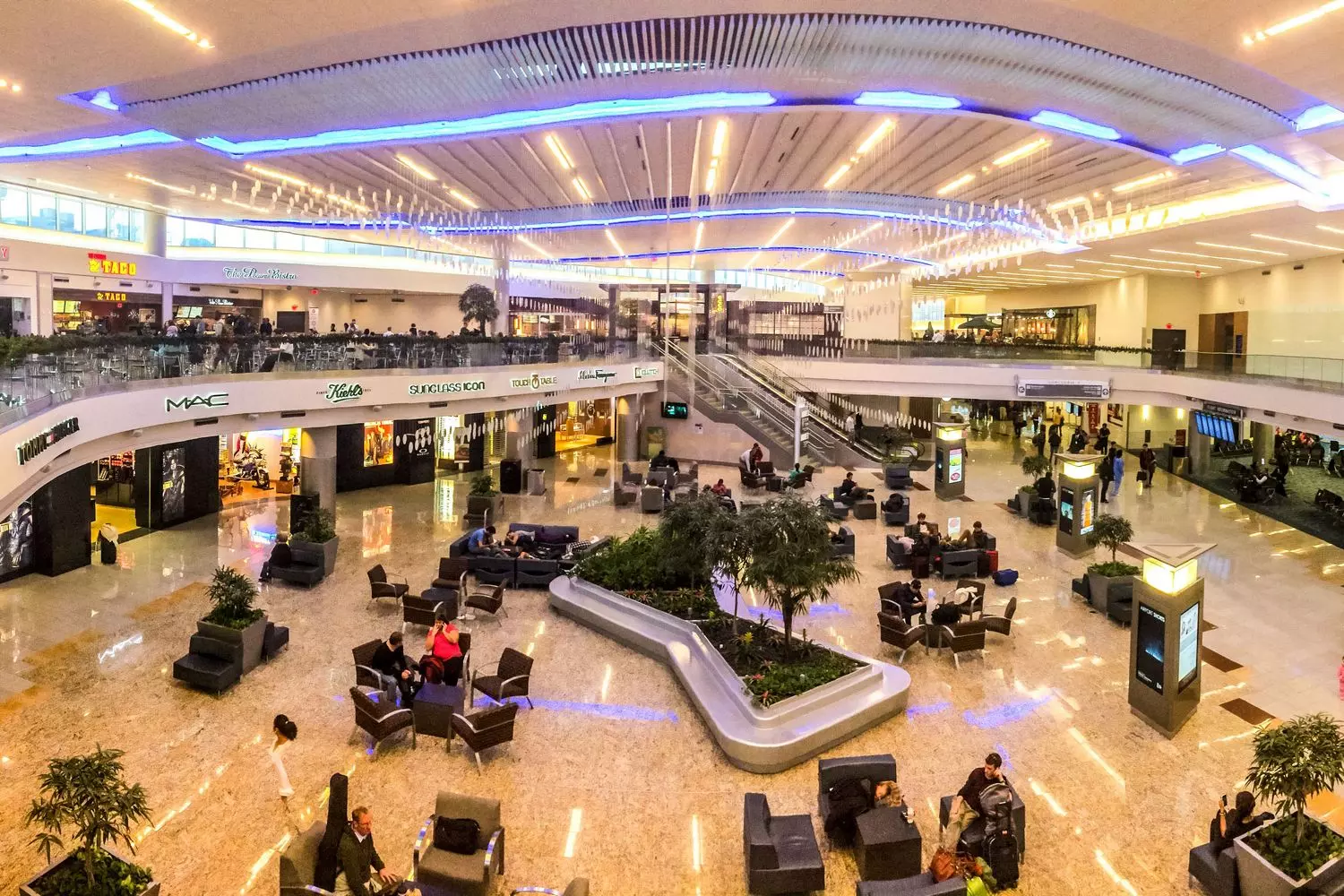
Los Angeles International Airport
Los Angeles, California
Airport Code: LAX
LAX is the largest airport on the West Coast of the United States, serving over 88 million passengers annually. Located 30 km from downtown Los Angeles, it is one of the busiest hubs in the world.
- Founded in 1928
- Originally used for aviation exhibitions and small private flights.
- 1930s
Opened as Mines Field, with the first commercial flight taking place in 1946. - 1961
The iconic Theme Building was constructed — a "space age" arch symbolizing a futuristic vision of aviation. - 2020s
Extensive airport modernization — terminal expansions, infrastructure upgrades, and the construction of a new metro station.
LAX has nine terminals, all connected by free shuttle buses.
- Terminal 1
Southwest Airlines hub. - Terminal 2
International flights (Aeromexico, WestJet). - Terminal 3
Updated Delta Air Lines terminal. - Terminal 4
American Airlines. - Terminal 5
Spirit, JetBlue, and international airlines. - Terminal 6
Alaska Airlines, Air Canada. - Terminals 7/8
United Airlines hub. - Tom Bradley International Terminal (TBIT)
Handles most international flights (Emirates, Lufthansa, Singapore Airlines, Qantas, Turkish Airlines).
LAX offers flights to more than 100 countries around the world and serves as a key hub for American Airlines and Delta Air Lines. Passengers have access to premium lounges, world-renowned brand stores, and unique art exhibits displayed throughout the terminals.
Popular destinations: Tokyo, London, Paris, Sydney, Dubai, Hong Kong, Mexico City, Hawaii.
What to do while waiting for your flight?
- 01. Admire the Theme Building architecture
The Theme Building, an iconic arch built in 1961, symbolizes the space age. Once home to a restaurant, the building is now closed to the public.
- 02. Relax in the lounge
- Star Alliance Lounge (TBIT)
A luxurious lounge with a rooftop terrace. - Delta Sky Club (Terminal 3)
Premium service for business class passengers. - American Airlines Flagship Lounge (Terminal 4)
Elite rest areas with food and drinks.
- 03. Enjoy delicious food
- Umami Burger (Terminal 1)
Famous California-style burgers. - The Plant Café Organic (TBIT)
Organic cuisine and vegan dishes. - Vino Volo (Terminal 6)
Wine bar with snacks. - Border Grill (Terminal 3)
Mexican tacos and margaritas.
- 04. Go shopping
- Gucci, Burberry, Hermès
Luxury brand stores in TBIT. - Hudson News
Books, magazines, and souvenirs. - InMotion Entertainment
Electronics and travel accessories.
- 05. Visit the LAX Cinema
LAX has a small cinema where short films and animations by local directors are shown.
How to get to the airport from the city
- Metro Rail (LAX People Mover)
Expected soon, this will connect the airport to the metro line. - FlyAway Bus
A convenient shuttle to downtown Los Angeles ($9, ~40 minutes). - Taxi and Uber/Lyft
30-60 minutes to downtown, fare ranges from $40-70.
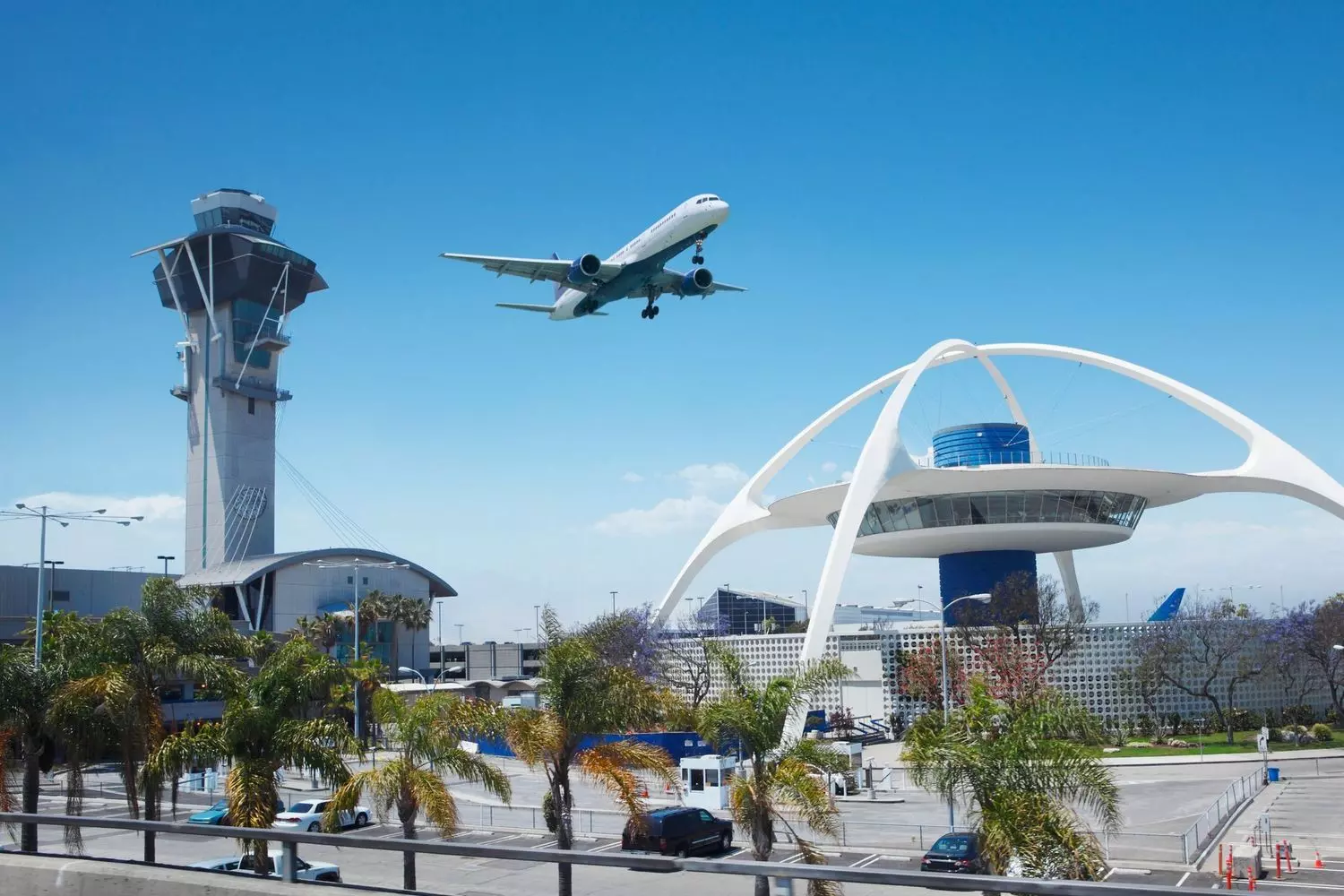
O'Hare International Airport
Chicago, Illinois
Airport Code: ORD
Chicago O'Hare International Airport is one of the most important aviation hubs in the United States, connecting countries and continents. Opened in 1944, it was originally used as a military factory for Douglas Aircraft. In 1949, it was renamed in honor of Edward "Butch" O'Hare, a World War II Navy fighter pilot and the first recipient of the U.S. Medal of Honor.
ORD consistently ranks among the busiest airports in the world. In 2023, it served over 74 million passengers. United Airlines and American Airlines are based here, with flights operated by over 70 airlines.
O'Hare is known for its unique runway configuration. Initially, there were seven runways in different directions, causing frequent intersections and delays. Now, a parallel scheme has been implemented:
- 8 runways
- Main runways running east-west to improve traffic flow
- No more runway intersections, reducing delays
- One of the longest runways, Runway 10C/28C (3,660 meters), accommodates the largest aircraft, including the A380
ORD is also famous for frequent flight delays, especially in winter. The reasons include:
- Snowstorms — Chicago winters are snowy and windy
- Strong crosswinds due to the airport's location
- Thunderstorms, particularly in summer, affecting air traffic
On average, about 20% of flights are delayed each year due to weather or congestion. However, the new runway layout and advanced traffic management technologies have already helped reduce these delays.
Things to Do While Waiting for Your Flight
If you find yourself with time before your flight at O'Hare, there's no shortage of things to do. Here are some ideas for making the most of your time:
- 01. Relax in the Lounges
The airport offers plenty of lounges, including United Club, American Airlines Admirals Club, Delta Sky Club, and Swissport Lounge. You can relax, grab a snack, and enjoy free Wi-Fi. - 02. Try Local Cuisine
ORD is known for its great selection of restaurants. You can sample:
- Billy Goat Tavern
Legendary Chicago-style burgers - Chicago Style Hot Dogs
Famous hot dogs, served without ketchup - Giordano’s
Iconic deep-dish pizza - Tortas Frontera
Mexican cuisine by chef Rick Bayless
- 03. Shopping and Souvenirs
The airport features luxury brands (Michael Kors, MAC, Duty-Free) as well as stores offering Chicago-themed souvenirs. - 04. Take a Walk in Terminal 1
Here you'll find "The Sky’s the Limit" an impressive light installation with neon lights and a mirrored ceiling. - 05. Visit the Yoga Center
Terminal 3 has a free yoga space — an ideal spot to stretch and unwind. - 06. Admire the Art
ORD is one of the few airports with its own art collection. Various terminals showcase works by local artists, including exhibitions. - 07. Play in the Kids' Zone
Terminal 2 is home to Kids on the Fly, an interactive play space for young travelers.
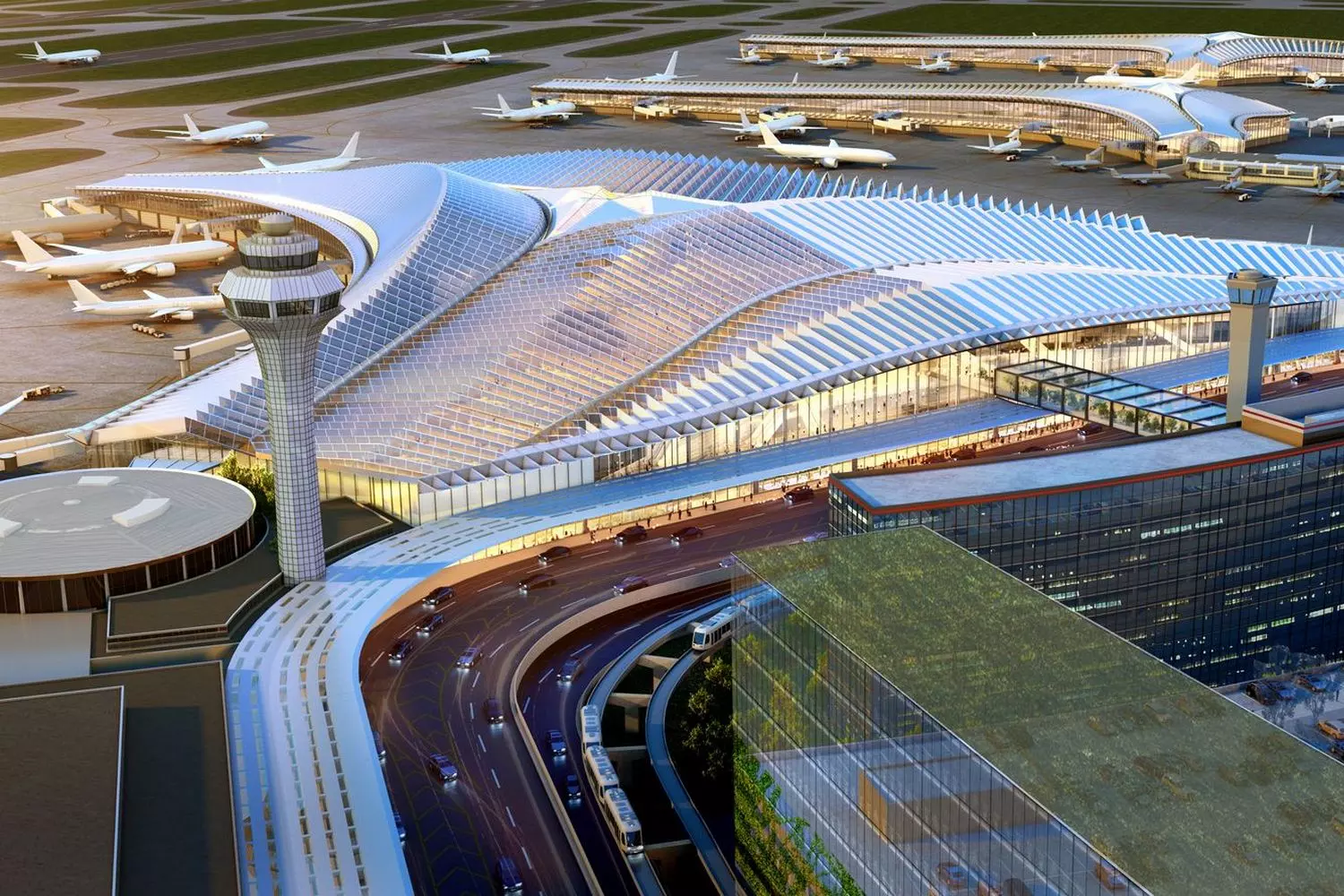
Dallas/Fort Worth International Airport
Dallas-Fort Worth, Texas
Airport Code: DFW
DFW is one of the largest and busiest airports in the United States, ranking second in size among U.S. airports (after Denver International Airport). It is located between Dallas and Fort Worth, playing a central role in the U.S. transportation system.
The airport opened in 1973, but the idea for its construction dates back to the 1940s. Previously, Dallas and Fort Worth had separate airports, but due to competition, the need for a unified, large aviation hub became clear. After lengthy negotiations and construction, DFW was established, and it has been expanding ever since. Here are some key milestones:
- 1974
The first flight departs from DFW (American Airlines to Little Rock). - 1989
Opening of the international terminal. - 2005
Launch of the SkyLink system—the world’s fastest automated airport transit system. - 2022
More than 73 million passengers, making it the second busiest airport in the U.S.
Today, DFW serves as the main hub for American Airlines, providing flights worldwide.
The airport consists of five terminals (A, B, C, D, E) arranged in a semicircular shape and connected by the SkyLink system — an automated train that allows for quick movement between terminals.
- Terminals A, B, C
Serve domestic flights, primarily for American Airlines. - Terminal D
Handles international flights and premium lounges. - Terminal E
Serves other airlines, including Delta, Spirit, and Alaska Airlines.
What to do while waiting for your flight?
- The Centurion Lounge (Terminal D)
One of the best Amex lounges. - Capital One Lounge
Offers showers and cozy work areas. - The Salt Lick BBQ
Famous Texas barbecue — Terminal D. - Whataburger
Iconic Texas burgers — Terminal E. - LUXE Duty-Free
Designer brands and perfumes. - Dallas Cowboys Pro Shop
A store with merchandise from the famous NFL team. - Minute Suites (Terminal D)
Cozy sleep capsules. - Grand Hyatt DFW
A 5-star hotel located right in the airport.
How to get to the airport?
- Trinity Railway Express (TRE)
A convenient train connecting DFW with Dallas and Fort Worth. - Taxi / Uber / Lyft
Travel time is around 30-40 minutes.
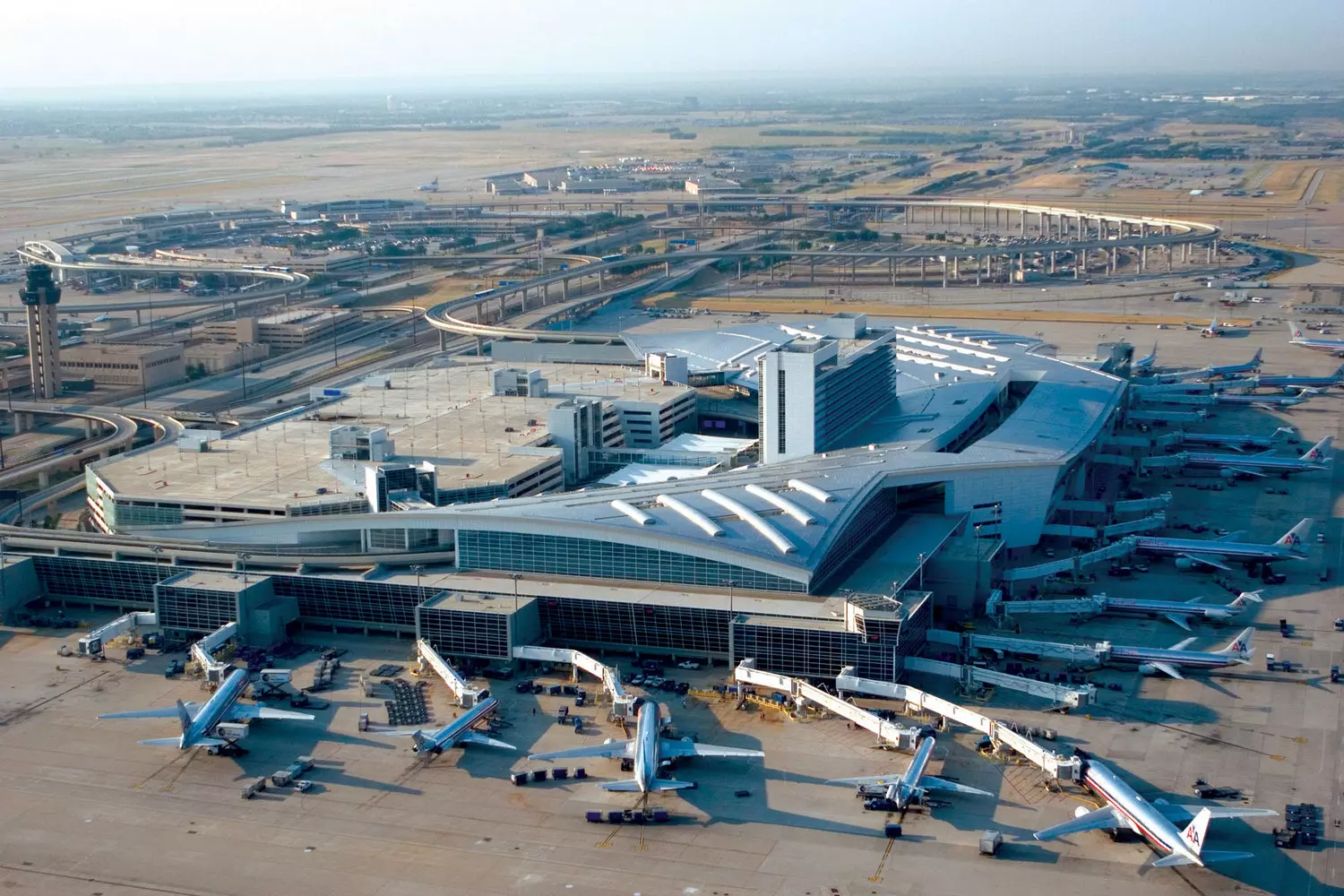
Denver International Airport
Denver, Colorado
Airport Code: DEN
Denver International Airport isn't just the largest airport in the U.S. by land area (136 square kilometers); it's also one of the most unusual. Known for its distinctive architecture, rich art collection, and mysterious conspiracy theories, it has become a place of intrigue.
- Opened on February 28, 1995 (construction began in 1989).
- Located 40 kilometers from downtown Denver, Colorado.
- The construction cost was $4.8 billion (well above the initial budget).
Before DEN, Stapleton International Airport was Denver’s main airport. However, it became too small and congested for the growing traffic. Additionally, its proximity to the city left little room for runway expansion, and weather conditions caused frequent delays.
The new airport was built on a vast area, which allowed:
- The creation of long, independent runways (without intersections).
- High capacity and minimized delays.
- Incorporation of architectural and artistic elements inspired by Colorado’s nature.
Architecture and Infrastructure
- Jeppesen Terminal
The airport's main building, famous for its roof shaped like the snow-capped peaks of the Rocky Mountains. - 6 Runways
Including the longest runway in the U.S. (4.88 km), capable of handling an Airbus A380. - DEN Transit Center
Connecting the airport to downtown Denver. - Extensive Art Collection
DEN is known as "the most artistic airport in the U.S."
Conspiracy Theories Around Denver Airport (DEN)
Denver International Airport is one of the most mysterious airports in the world. Due to its unusual art, underground tunnels, and strange symbols, many conspiracy theories have emerged. Let’s take a look at where they come from and what’s true.
Underground Bunkers and Secret Tunnels
- Theory: There is a massive underground bunker beneath the airport for the world’s elite or even the headquarters of the New World Order (NWO).
- Facts: During construction, problems with the baggage system did lead to abandoned tunnels and rooms. However, there is no evidence of "secret bunkers."
"Airport officials even play along with these theories, jokingly offering "tours of the secret tunnels."
"Blucifer" – The Creepy Blue Mustang
- Theory: The giant blue mustang with glowing red eyes is a symbol of the apocalypse or even the Antichrist.
- Facts: The sculpture is called Blue Mustang, created by artist Luis Jiménez.
Tragically, the artist died during the creation of the statue when a part of the sculpture fell on him, adding to its mystique.
Mysterious Murals with Dark Themes
- Theory: The airport features murals that predict the end of the world, global wars, and environmental disasters. There are soldiers in gas masks with weapons, alluding to tyranny and war. Grim scenes of destruction – cities in flames, crying children. The image of a phoenix rising from the ashes is seen as a symbol of rebirth, which many associate with secret societies.
- Facts: The murals were painted by artist Leo Tanguma.
The Masonic Stone and Time Capsule
- Theory: There's a stone at the airport with inscriptions related to Freemasons and the "New World Order."
- Facts: In Jeppesen Terminal, there is a granite slab with Masonic symbols and the inscription "New World Airport Commission."
Runways in the Shape of a Swastika
- Theory: When viewed from above, the airport’s runways resemble a swastika, linking it to neo-Nazi symbolism.
- Facts: This configuration was chosen for optimal air traffic management, allowing multiple runways to be used simultaneously.
Conclusion: Fact or Fiction?
All of these conspiracy theories are based on real elements, but Denver Airport uses them as part of its marketing. They've even put up humorous posters with questions like "What are we hiding?" So, if you find yourself at DEN, take a closer look at the strange symbols, murals, and Blucifer. Who knows, maybe the theories aren’t as crazy as they seem?
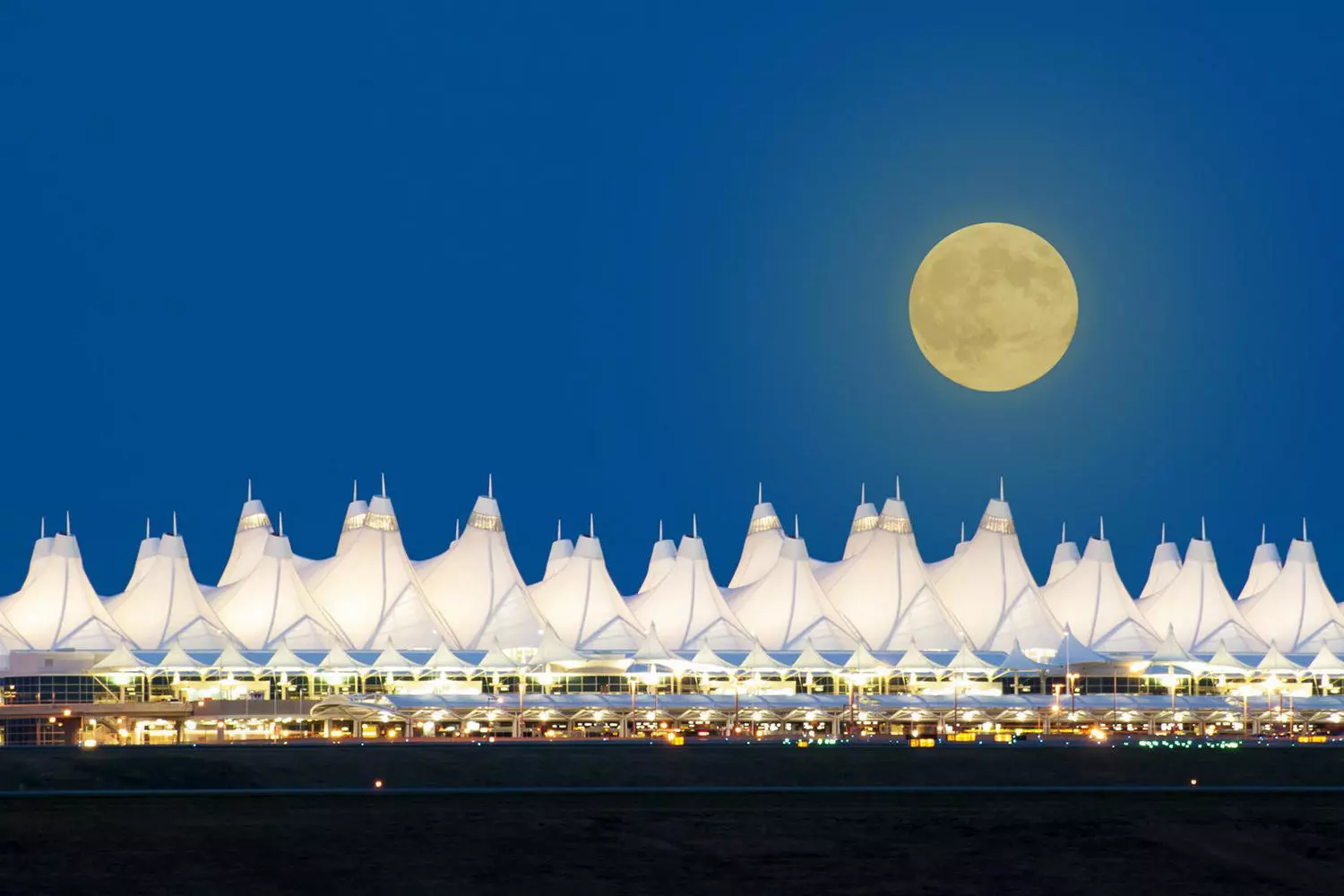
San Francisco International Airport
San Francisco, California
Airport code: SFO
One of the largest and most modern airports in the United States, located 21 kilometers south of downtown San Francisco. Known for its eco-friendly design, convenient infrastructure, and stunning views of the bay.
- Year established: 1927
- Original name: Mills Field Municipal Airport
- In 1954, an international terminal opened, becoming one of the largest in the world.
- In 2000, after a major renovation, the modern International Terminal was introduced.
- SFO became a pioneer in eco-friendly technologies, featuring solar panels, waste recycling, and electric vehicles.
SFO consists of four terminals:
- Terminal 1 (Harvey Milk Terminal)
Named after the LGBTQ rights activist, serving domestic flights. - Terminal 2
A comfortable terminal with lounges and art installations. - Terminal 3
The main terminal for United Airlines. - International Terminal
One of the best in the world, with many restaurants, relaxation zones, and advanced technological solutions.
Popular destinations: Asia (Tokyo, Seoul, Hong Kong), Europe (London, Paris, Frankfurt), Latin America.
Things to do while waiting for your flight
- 01. Admire the view of the bay
Some terminal areas feature panoramic windows offering beautiful views of the coastline and planes taking off. - 02. Visit the Aviation and Art Museum
The SFO Museum is home to vintage airplanes, historic photographs, and temporary art exhibitions. - 03. Try the local cuisine
- Koi Palace Express
Fresh sushi and dim sum. - Burger Joint
Classic American burgers. - Napa Farms Market
Wines and snacks from the Napa region.
- 04. Relax in the lounges
- United Polaris Lounge
One of the best lounges for international flights. - American Express Centurion Lounge
Premium service for AmEx cardholders.
- 05. Go shopping
At SFO, you can find designer clothing, cosmetics, electronics, and even unique souvenirs from Silicon Valley.
How to get to the city
- BART (metro)
Connects the airport to downtown San Francisco (40 minutes, $10). - Taxi/Uber/Lyft
The ride takes 30-45 minutes (from $40).
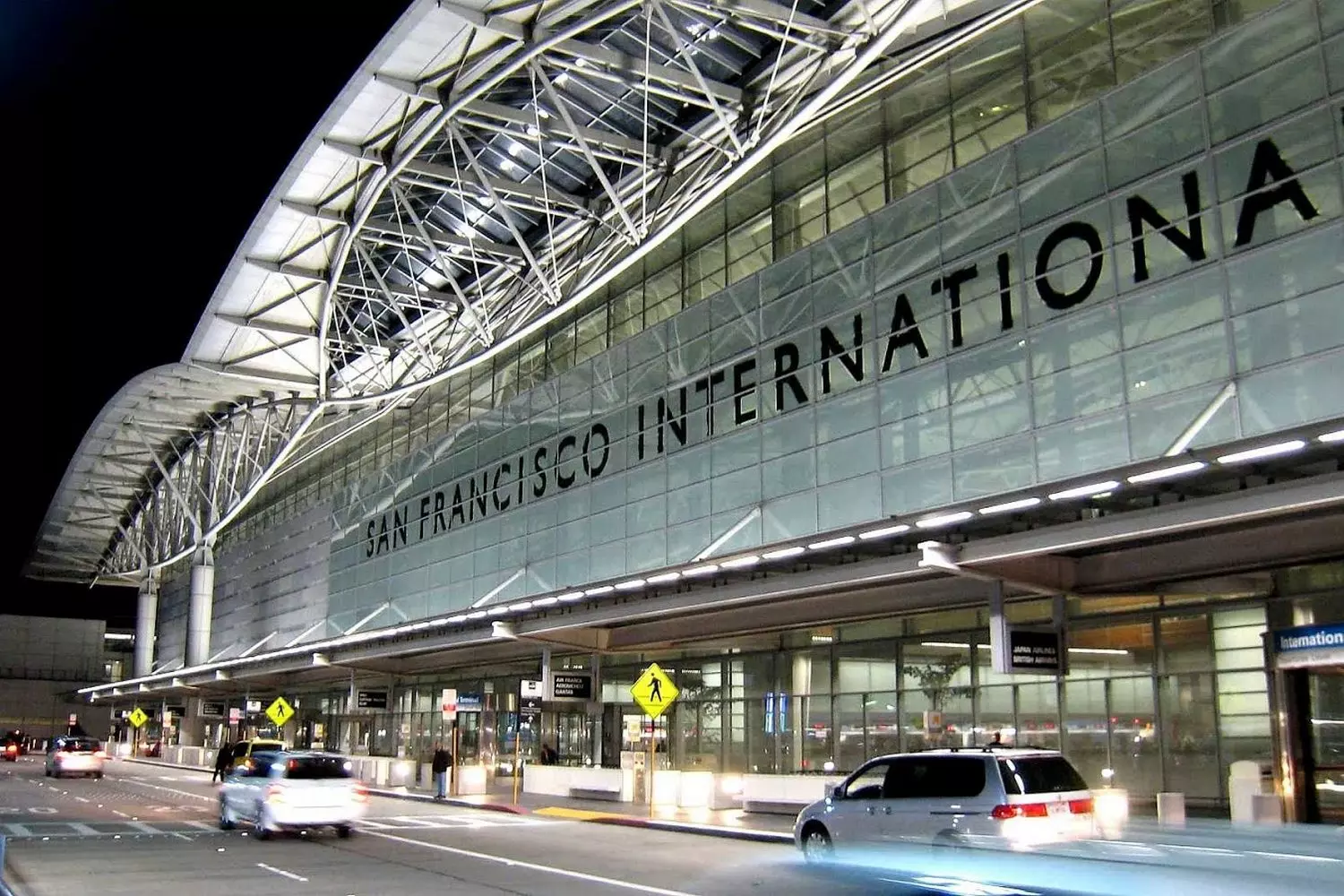
John F. Kennedy International Airport
Queens, New York
Airport Code: JFK
JFK is New York's largest international airport, located in the Queens neighborhood. It is one of the busiest airports in the United States, serving over 62 million passengers annually. Thanks to its wide range of routes and airlines, JFK connects the United States with Europe, Asia, Latin America, and Africa.
- Opened on July 1, 1948, under the name Idlewild Airport.
- In 1963, following the assassination of the 35th President of the United States, the airport was renamed in honor of John F. Kennedy.
- In the 1950s and 1960s, JFK became the main transatlantic hub for the United States.
- In 2001, a new Terminal 4 opened, replacing the old international terminal.
- In 2022, a massive $19 billion renovation began, involving terminal expansions and infrastructure improvements.
JFK consists of six passenger terminals, each serving specific airlines:
- Terminal 1
Serves European and Asian airlines (Lufthansa, Air France, Japan Airlines). - Terminal 2
Previously used by Delta, but demolished in 2023 to make room for the expansion of Terminal 4. - Terminal 4
The main international terminal and a hub for Delta Air Lines. - Terminal 5
Owned by JetBlue Airways, with Aer Lingus and Hawaiian Airlines also operating here. - Terminal 7
A base for British Airways, Icelandair, and All Nippon Airways (ANA). - Terminal 8
A hub for American Airlines and the Oneworld Alliance (Qatar Airways, British Airways, Finnair).
Popular Destinations: London, Paris, Dubai, Tokyo, São Paulo, Mexico City, Singapore, Frankfurt.
What to Do While Waiting for Your Flight?
- 01. Relax in the Lounges
JFK offers premium lounges with complimentary food, showers, and comfortable resting areas:
- TWA Hotel (Terminal 5)
A stylish 1960s-themed hotel with a rooftop pool and runway views. - American Airlines Flagship Lounge (Terminal 8)
For first-class and business-class passengers. - Delta Sky Club (Terminal 4)
A spacious lounge with a bar and showers. - British Airways Concorde Room (Terminal 7)
A luxurious lounge with a refined menu.
- 02. Try Delicious Food
- Deep Blue Sushi (Terminal 5)
One of the best sushi restaurants at U.S. airports. - Shake Shack (Terminal 4)
Iconic burgers and fries. - Piquillo (Terminal 5)
Spanish tapas and wines. - La Vie (Terminal 4)
A cozy coffee shop with a warm atmosphere.
- 03. Go Shopping
- Duty-Free Shops
Stores featuring perfumes, alcohol, and electronics. - Hugo Boss, Coach, Michael Kors
Boutiques of famous brands. - Hudson Booksellers
Bookstores for reading enthusiasts.
- 04. Take Advantage of Passenger Amenities
- Spa Services (XpresSpa, BeRelax)
Massages and skincare treatments. - Sleep Zones and Capsule Hotels
A quick rest before your flight. - Play Areas
Entertainment for both children and adults.
How to Get to New York?
- AirTrain JFK + Subway (MTA)
The most budget-friendly option (~$8, travel time ~50 minutes). - Taxi / Uber / Lyft
Fixed fare to Manhattan $70 (+ tips), 40-60 minutes. - NYC Express Bus
Connects the airport with Manhattan and Brooklyn.
Fort Lauderdale-Hollywood International Airport
Fort Lauderdale, Florida
Airport Code: FLL
FLL is the fourth busiest airport in Florida, serving over 36 million passengers annually. It is especially popular among budget airlines and cruise passengers departing from Port Everglades.
- 1929
Opened as Merle Fogg Field, used for private and military flights. - 1940s
During World War II, it became a military airbase. - 1953
Converted into a civilian airport and granted international status. - 2000s — Present
Undergoing active modernization, with terminal and runway expansions.
The airport consists of four terminals, each serving specific airlines:
- Terminal 1 (Yellow)
Southwest Airlines, Alaska Airlines. - Terminal 2 (Red)
Delta Air Lines, Air Canada. - Terminal 3 (Purple)
American Airlines, JetBlue Airways. - Terminal 4 (Blue)
International flights (Spirit Airlines, Copa Airlines, Avianca, Air Transat).
Popular Destinations: New York, Atlanta, Los Angeles, San Juan, Toronto, Nassau, Bogotá, Lima.
Things to Do While Waiting for Your Flight
- Escape Lounge (Terminal 3)
A cozy relaxation area with food and drinks. - Zona Fresca (Terminal 3)
Fresh Mexican tacos and burritos. - Casavana Cuban Cuisine (Terminal 4)
Traditional Cuban cuisine. - Dufry Duty-Free (Terminals 2, 3, 4)
Perfumes, alcohol, souvenirs. - Admire Local Art
Each terminal features art installations by local artists, inspired by Florida’s nature and culture.
How to Get to the Airport from the City
- Brightline Train
Connects the airport to Miami, West Palm Beach, and Orlando. - Public Buses (Broward County Transit, Route #1)
Takes you to downtown Fort Lauderdale in 30 minutes. - Taxi / Uber / Lyft
A 15-minute ride to downtown, costing $15-25.
Miami International Airport
Miami, Florida
Airport Code: MIA
Miami International Airport (MIA) is Florida's primary international airport and the largest aviation hub for flights to Central and South America, as well as the Caribbean. Serving around 50 million passengers annually, it ranks as the 10th busiest airport in the United States.
- 1928
Opened as Pan American Field, serving as the base for Pan American Airways. - 1945
Renamed Miami International Airport, marking the beginning of major upgrades. - 1959
A new passenger terminal was introduced. - 1990s–2000s
Infrastructure expanded with the construction of an international terminal. - 2020s
Ongoing projects focus on service enhancements, including automated passport control systems.
The airport has three terminals, all connected by the automated Skytrain system.
- North Terminal (Blue Terminal)
The main hub for American Airlines with international flights. - Central Terminal (Yellow Terminal)
Flights from Delta, United, Air Canada, and Copa Airlines. - South Terminal (Red Terminal)
Serves international flights, including Iberia, Lufthansa, LATAM, British Airways, and Turkish Airlines.
Popular Destinations: New York, Los Angeles, London, Paris, Madrid, Bogota, São Paulo, Havana, Cancun.
Things to Do While You Wait
- 01. Galleries and Art
- MIA Galleries
Exhibitions from local and international artists, inspired by Miami's culture. - The Hall of Aviation
An exhibition dedicated to the history of aviation in Miami.
- 02. Latin American Flavors
- Café Versailles (North Terminal)
Famous Cuban restaurant offering traditional sandwiches and coffee. - Corona Beach House (Central Terminal)
Mexican dishes and cocktails. - Bacardi Mojito Bar (South Terminal)
Caribbean cuisine and signature mojitos.
- 03. Shopping & Duty-Free
- Dufry Duty-Free (All terminals)
Perfumes, alcohol, souvenirs. - Michael Kors, Montblanc, TUMI (Central Terminal)
Popular luxury brands. - InMotion Entertainment (North Terminal)
Electronics and accessories.
- 04. Relax in Lounges
- Admirals Club (North Terminal)
American Airlines lounge with premium services. - Turkish Airlines Lounge (South Terminal)
A stylish resting area with panoramic views.
- 05. Unique Amenities
- XpresSpa (Central Terminal)
Express massages and relaxation zone. - Pet Relief Area
Special zones for passengers traveling with pets.
How to Get to the City
- Metrorail (Orange Line)
Connects the airport with downtown Miami and the Dadeland area. - Tri-Rail
Convenient for trips to Fort Lauderdale and West Palm Beach. - Miami-Dade Transit Buses
Routes to various Miami neighborhoods. - Taxi/Uber/Lyft
A ride to South Beach takes 20-30 minutes.
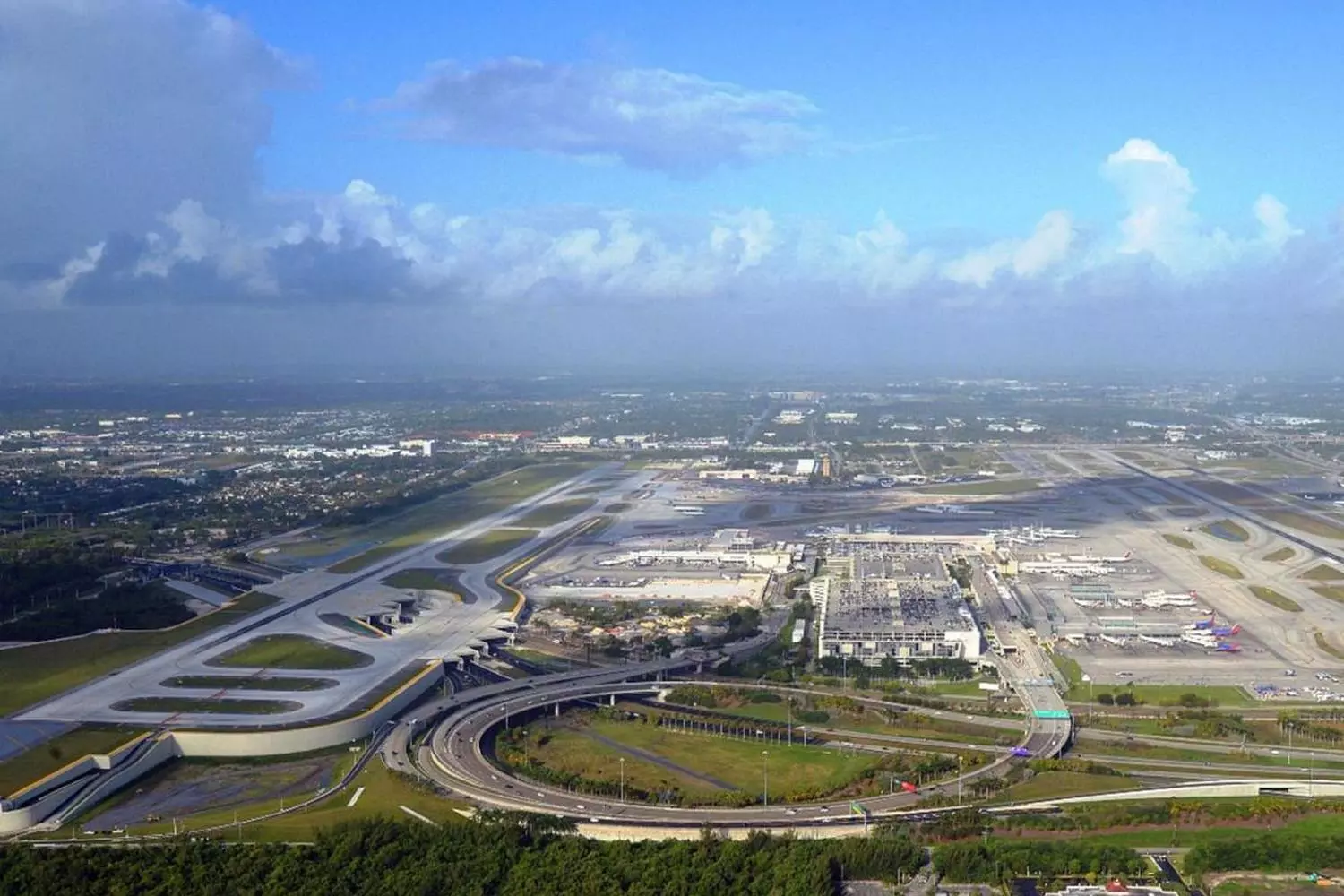
Helpful tips for those arriving at US airports
Traveling to the United States begins with passing through border control and other airport procedures. To avoid delays and unpleasant situations, it’s important to familiarize yourself with the key rules in advance.
- Citizens of most countries must have either a U.S. visa or an ESTA (if their country participates in the Visa Waiver Program).
- If you have items that require declaration, make sure to fill out the customs declaration form in advance.
- Border officers may ask about the purpose of your visit, the length of your stay, and where you will be staying.
- If officers have any concerns, you may be selected for additional screening. This is a standard procedure, especially for first-time visitors.
- It’s a good idea to purchase an eSIM or an international SIM card in advance to stay connected.
- Credit and debit cards are widely accepted in the U.S., but cash may still be needed for certain taxis or vending machines.
- Fresh fruits, meat, plants, and some other food items cannot be brought into the U.S. without special permission.
- If you’re carrying more than $10,000 in cash per family, you must declare it upon arrival.
- Tip from American Butler: If you’re looking for a comfortable travel experience, including private transfers or personal assistance, reach out to American Butler — we’ll make your journey smooth and worry-free!
Personalized service from American Butler
Airports in the United States stand out for their impressive scale, high level of service, and cutting-edge technology. Whether it’s Atlanta’s Hartsfield-Jackson, the world’s busiest airport, or Miami’s convenient international hub, each plays a crucial role in shaping the country’s aviation industry.
If you need assistance with trip planning, flight bookings, or translation services, American Butler is here to offer top-tier, personalized support. Get in touch with us, and we’ll make sure your journey is as smooth and comfortable as possible!














